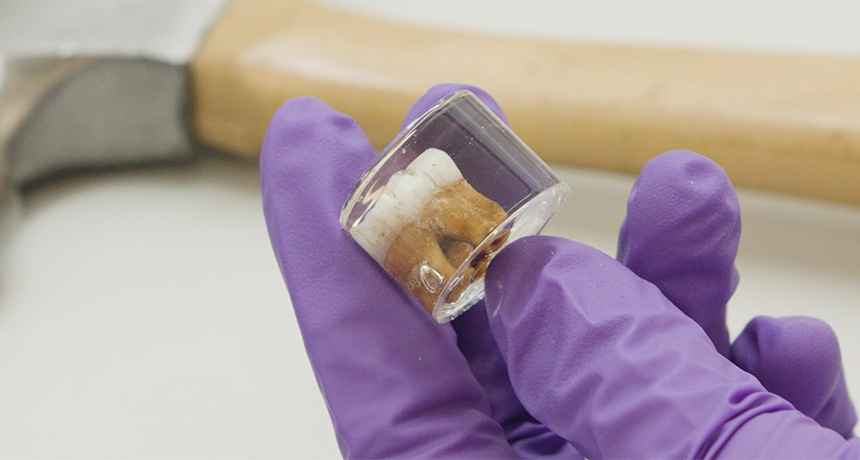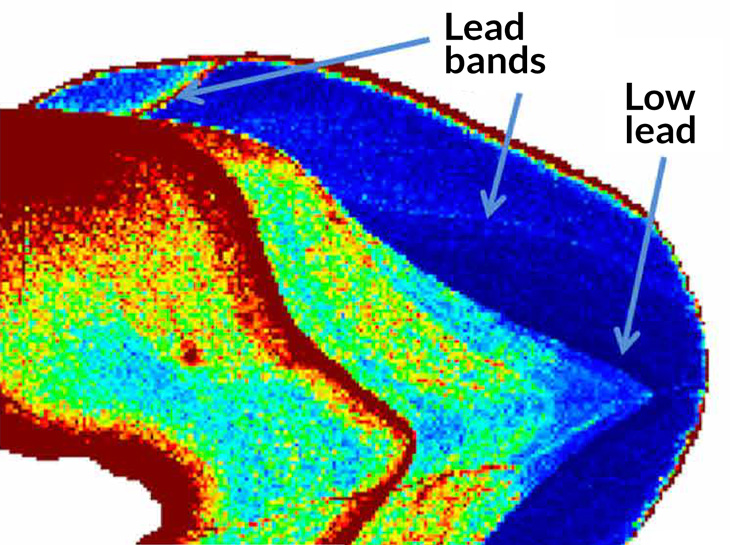Neandertal teeth reveal the earliest known signs of lead exposure
Chemical analyses provide more clues about the environments our ancient relatives lived in

FILLING THE GAPS Analyzing the fossilized teeth (one shown) of two young Neandertals could provide a window into the environmental dangers the ancient hominids faced.
T.M. Smith/Griffith Univ.








